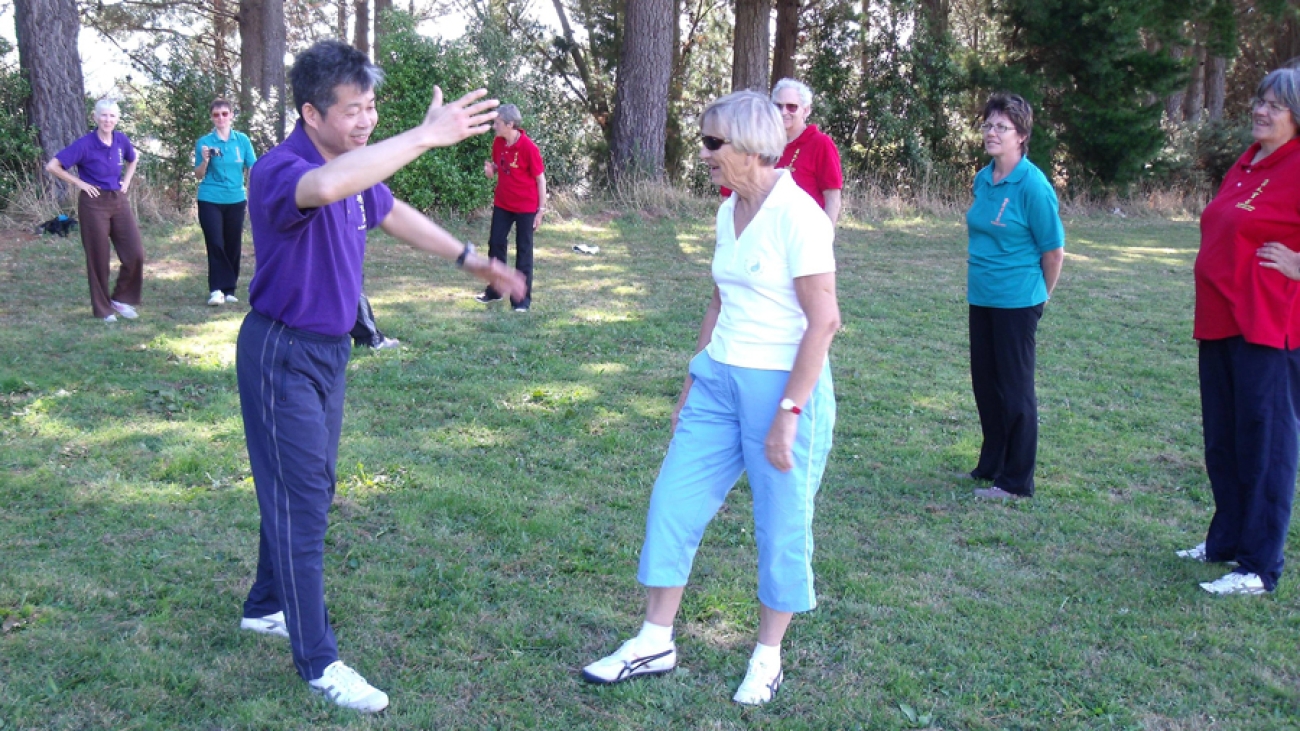Qigong? What’s that? Oh its sort of Tai Chi is it? How often do I hear this sort of question!! Where Tai Chi (Taiji Quan) is pretty well known in the West, many people have never heard of Qigong – let alone Wild Goose Qigong. So here goes for an introductory explanation.
I often start this explanation by saying that ‘Qigong’ is a general concept a bit like ‘exercise’. The western idea of exercise is based on physical movement – and there are many many different kinds and traditions of physical exercise, including sports. In contrast, Qigong is based on the concept of ‘qi’ or internal energy that can be ‘worked with’ (gong) in skilful ways to strengthen internal organs, and promote a free flow of qi throughout the channels and acupuncture points of the body, increasing energy, stamina and a healthy immune system.
Qigong is integral to Chinese thinking and tradition about health and connects to Traditional Chinese Medicine, 5 Element Theory, the concept of Yin and Yang or balance in all things. As such, it also permeates theory and practice of Chinese Martial Arts, including Taiji Quan (Tai Chi).
So here ,where Qigong and Taiji Quan overlap, is also where they diverge. Whereas Taiji Quan is a martial art i.e. developed for purposes of fighting and defence, Qigong is about internal health and strength – i.e. primarily is about health.
Furthermore, just as there are many different kinds of martial arts, including several different traditions of Taiji Quan, so there are different traditions of Qigong. The Qigong we teach is of course the Daoist Dayan (Wild Goose) Qigong with its beautiful flowing movements that follow nature in the style of the movements of the Wild Goose as observed by the monks high up in the Kunlun mountain range hundreds of years ago. Stretching, fluttering, gathering and releasing qi, movements that help qi move through the channels, connect to acupuncture points, fast and slow, moving to build energy and stillness to store energy – Dayan Qigong can heal, prevent ill health and promote optimal good health.
Of course, Taiji Quan is also good for health and usually this is how it is promoted. But the movements were developed as training for combat, drawing on internal energies as well as specific movements for attack and defence. Chen Taiji Quan is taught at the Tse Qigong Centre and is the ‘mother ship’ of later traditions such as Yang, Wu, Wu and Sun. In addition to Dayan Qigong, I also enjoy training in Chen Taiji Quan, as well as the skills of Northern Shaolin ‘Chun Yuen Quan’. All these different energies train the body and mind in different ways, all are enriching.

